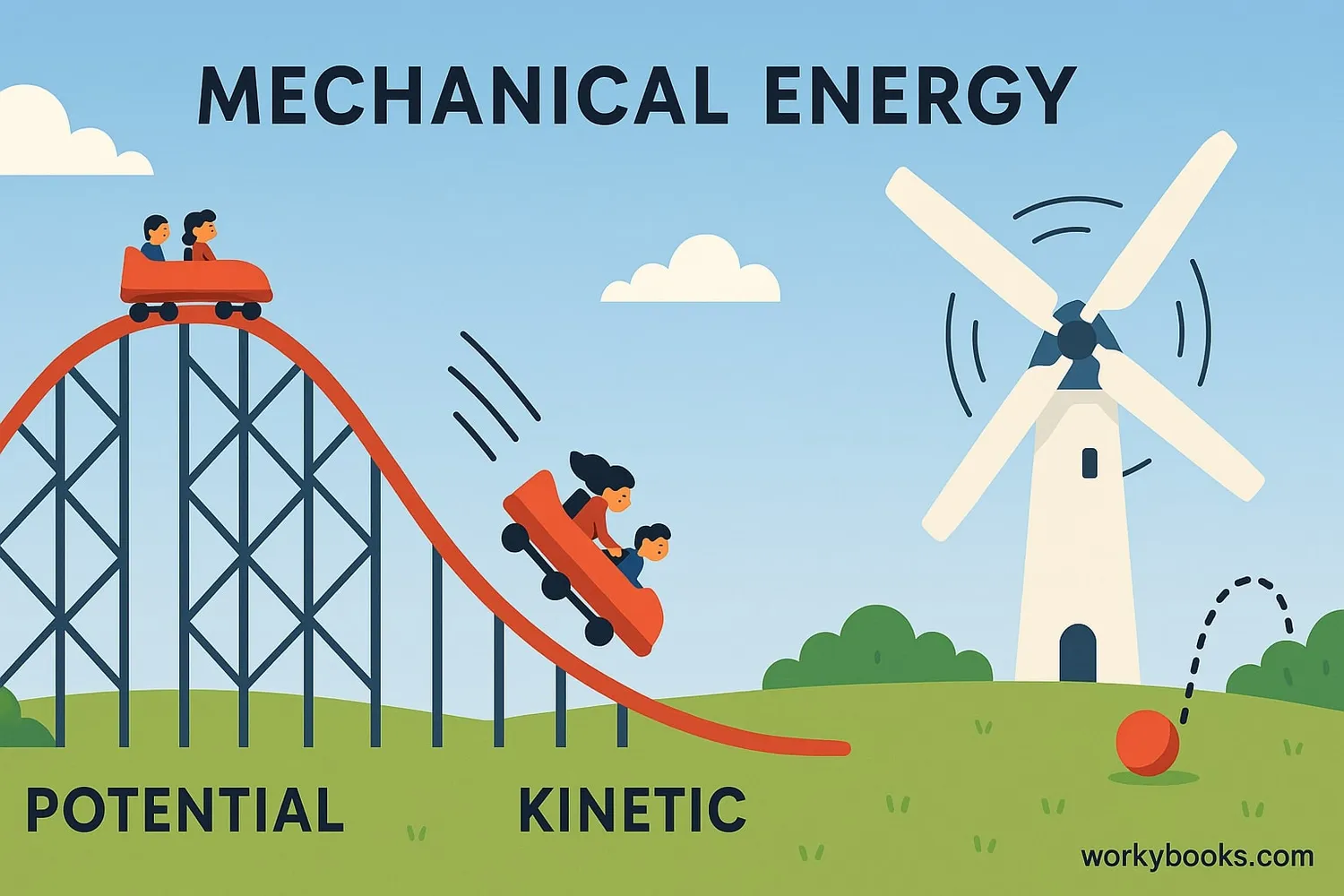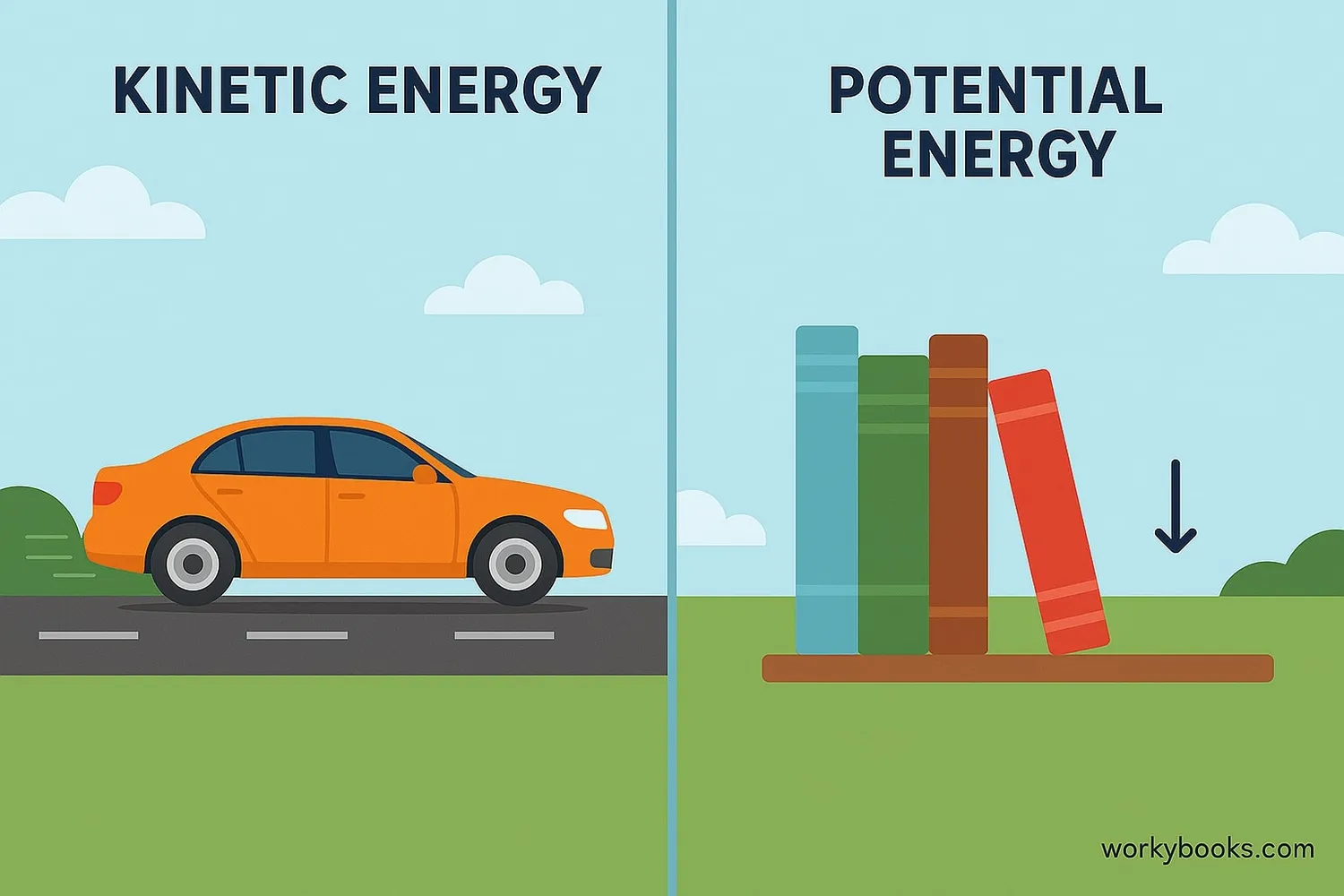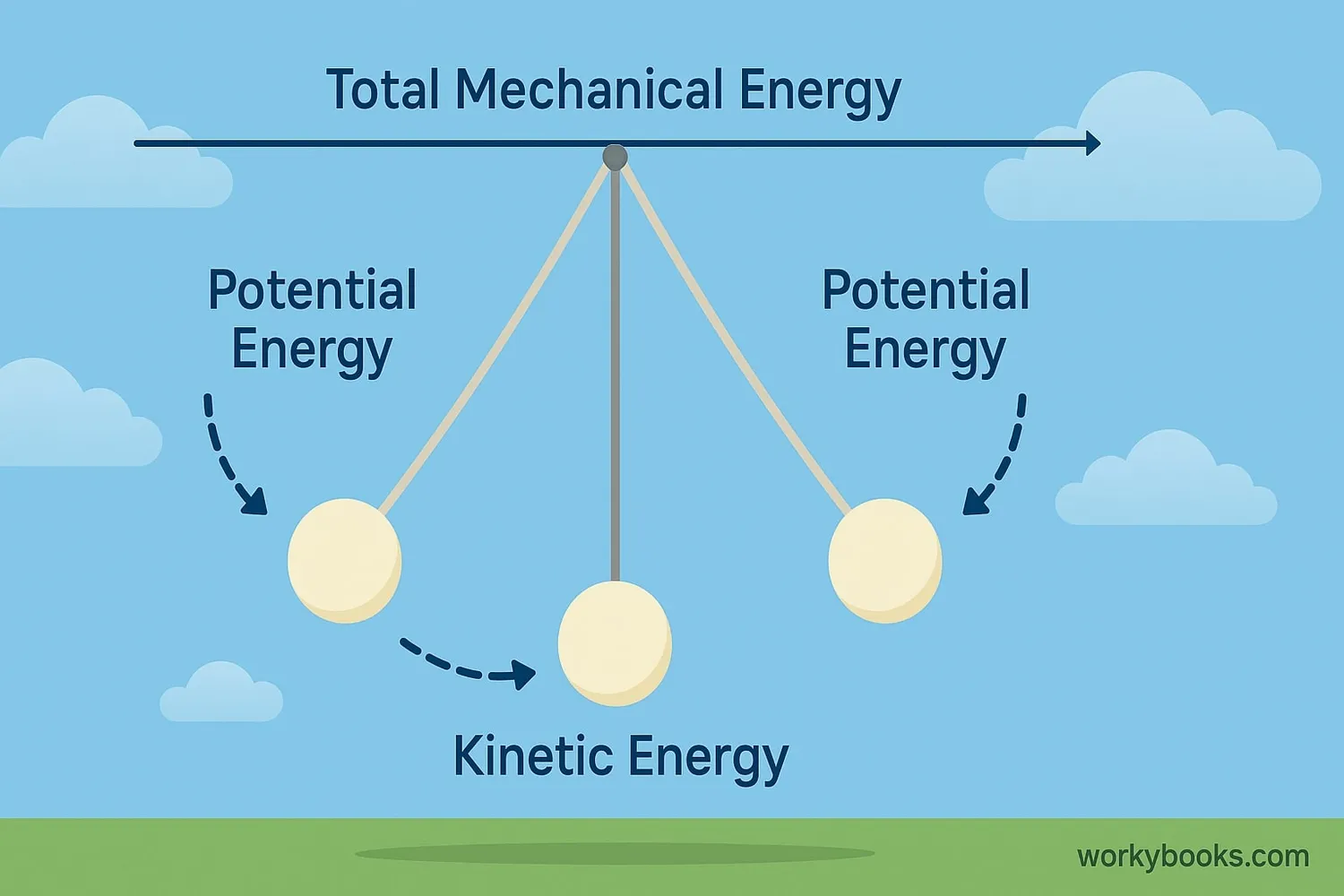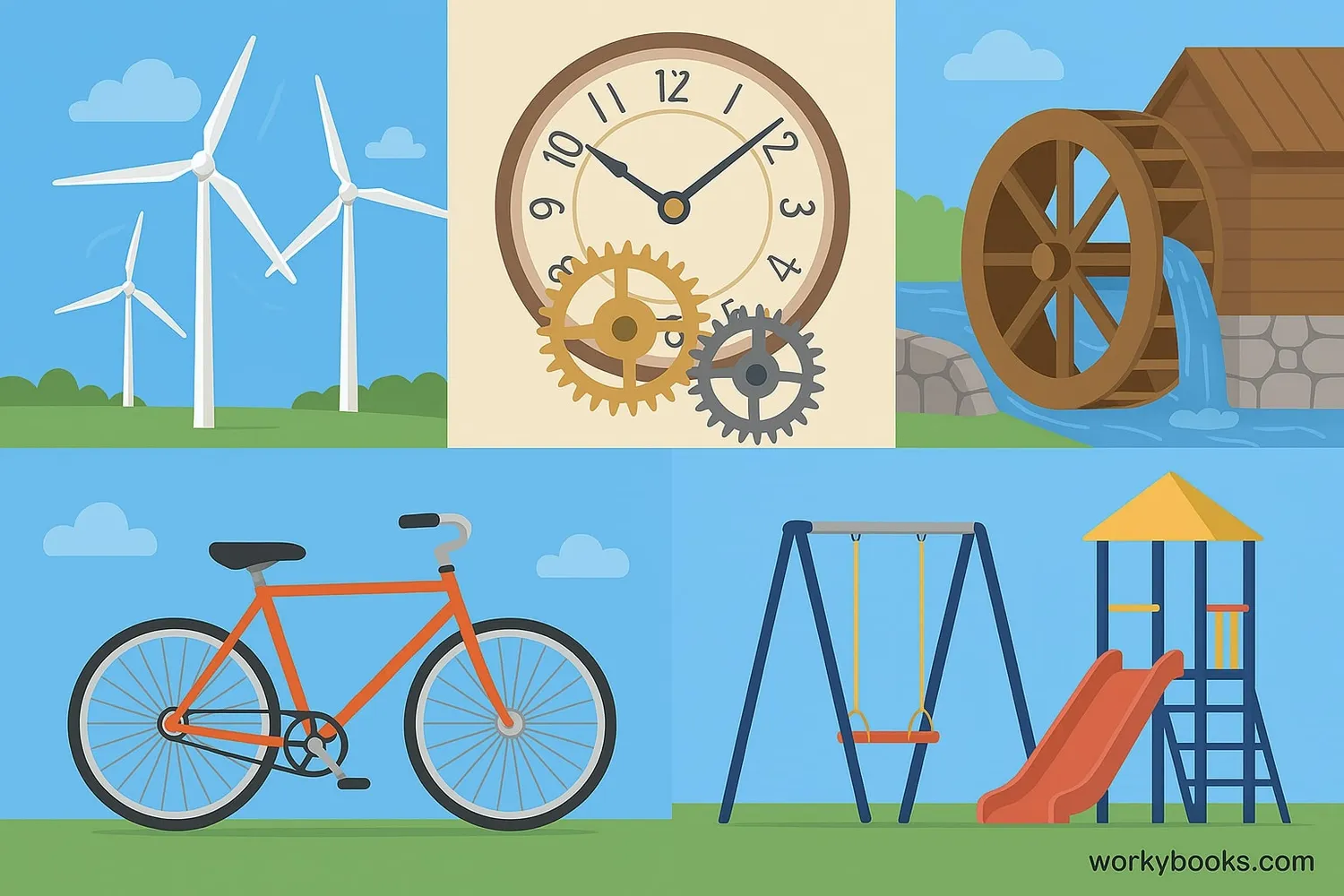Mechanical Energy - Definition, Examples, Quiz, FAQ, Trivia
Discover how moving objects store and use energy!
What is Mechanical Energy?

Mechanical energy is the energy that an object has because of its motion or its position. It's the energy that makes things move or have the potential to move. When you see anything moving - from a soccer ball to a car - you're seeing mechanical energy in action!
Think of mechanical energy as the combination of two important types of energy:
Kinetic Energy (energy of motion) and Potential Energy (stored energy). Together, they help explain how objects move and interact in our world.
Energy Connection
Mechanical energy is all around us! From the wind blowing leaves to cars driving on roads, it's part of our daily lives.
Types of Mechanical Energy

Mechanical energy comes in two main forms that constantly transform into each other:
Kinetic Energy
Energy of motion. Anything that's moving has kinetic energy.
Formula: KE = ½ × mass × velocity²
Potential Energy
Stored energy based on position. Ready to become motion.
Formula: PE = mass × gravity × height
These two forms of energy work together in a continuous dance. When you lift a book onto a shelf, you give it gravitational potential energy. When it falls, that potential energy transforms into kinetic energy as it moves faster toward the ground.
Everyday Example
A roller coaster has maximum potential energy at the top of a hill and maximum kinetic energy at the bottom!
Conservation of Mechanical Energy

One of the most important rules in physics is the Law of Conservation of Energy. It states that energy cannot be created or destroyed - it can only change forms. For mechanical energy in an ideal system (without friction or air resistance), the total amount remains constant.
This means that the sum of an object's kinetic and potential energy stays the same, even as energy transforms from one type to another. When a basketball bounces, mechanical energy transforms between kinetic and potential with each bounce.
Energy Transformation
Potential → Kinetic → Potential → Kinetic...
Total Mechanical Energy
Remains constant in closed systems
Real World Difference
Friction gradually converts mechanical energy to heat
Mechanical Energy in Everyday Life

Mechanical energy powers many things in our world. Here are some examples you might recognize:
Wind Turbines
Convert kinetic energy of wind into electrical energy
Bicycles
Your leg muscles create mechanical energy to turn wheels
Clocks
Mechanical clocks use springs (potential energy)
Other examples include:
• Hydroelectric dams (water's kinetic energy → electricity)
• Pendulum clocks (swinging motion keeps time)
• Roller coasters (constant energy transformation)
• Sports (throwing, kicking, hitting all use mechanical energy)
Mechanical Energy Quiz
Test your knowledge with this mechanical energy quiz! Answer all 5 questions to see how much you've learned.
Frequently Asked Questions
Here are answers to common questions about mechanical energy:
Fun Mechanical Energy Trivia
Discover some amazing facts about mechanical energy!
Human Power
A professional cyclist can generate about 400 watts of mechanical energy - enough to power several light bulbs!
Space Conservation
In the vacuum of space with no friction, mechanical energy remains perfectly conserved. A spinning object would spin forever!
Ancient Machines
The earliest known machines using mechanical energy date back 5,000 years to ancient Egyptian shadufs for lifting water.
Animal Engineers
Beavers are nature's mechanical engineers - their dams convert the kinetic energy of flowing water into potential energy stored in elevated ponds.


